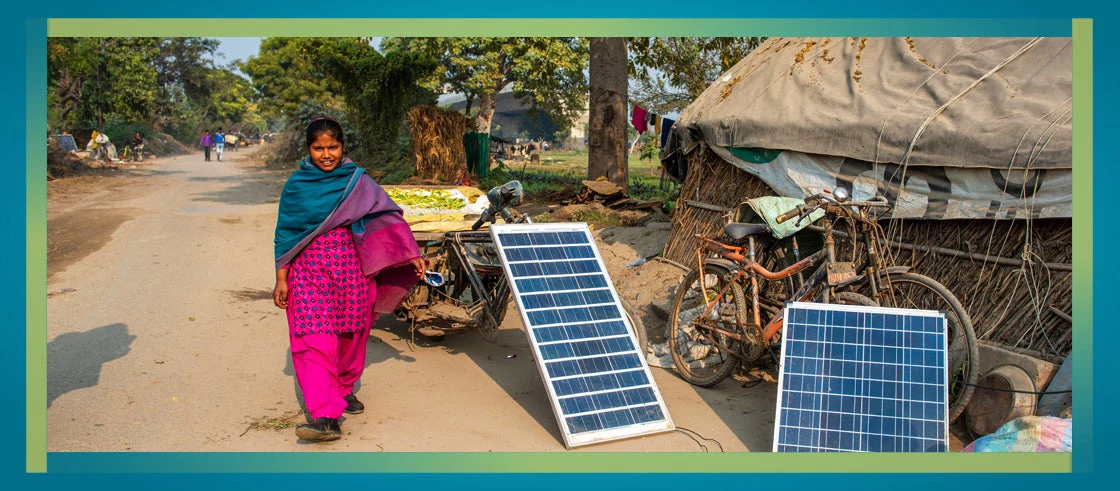 Picture of woman with solar panels in India.
Picture of woman with solar panels in India.
At first glance, South Asia is a bright spot in the global economy. The World Bank is forecasting that the region will grow more quickly than any other developing country region over the next few years. Some countries in the region are continuing a trend of strong growth, while others are recovering from a period of turmoil. While high inflation and interest rates have bogged down many emerging markets, South Asia seems to be forging ahead.
However, a second look reveals a more nuanced picture. The region is making progress, but at a slower pace than in the pre-pandemic years. That’s an issue because the region still has a long way to go. Per capita incomes average only about US$2,000—one-fifth of the level achieved by the neighboring East Asia and Pacific region or the upper-middle income average, and one-twentieth the level of high-income countries. Current growth rates may be higher than elsewhere, but they are still not sufficient for countries in the region to reach high-income status within a generation. Moreover, not all countries in the region are growing fast, and three—Afghanistan, Pakistan and Sri Lanka—are in acute crisis.
South Asia's growth rates may be higher than elsewhere, but they are still not sufficient for countries to reach high-income status within a generation
South Asia’s progress is akin to that of mountaineers at the foothills of the Himalayas. Some have barely left the base camp. Others are moving at a brisk pace but still in low altitude. All still have a long way to go. And the path will get more difficult ahead.
The World Bank's latest South Asia Development Update, Toward Faster, Cleaner Growth, provides a roadmap that policy makers can use to hasten their way towards their goal. There are four ingredients that are particularly important:
Boost private investment. Strong private investment is critical for accelerating the pace of catch-up with high-income countries and enabling the energy transition. In all but one country in South Asia, private investment growth has slowed compared to the pre-pandemic period. Strengthening private investment will depend on many factors, including improving infrastructure, the institutional and business environment, the ability of the financial system to provide credit, and removing market distortions.
Restore fiscal sustainability. Many countries in the region are carrying extra weight that makes this journey more difficult. Debt burdens around the world have gotten heavier in the last decade, but the increase in South Asia is above average. High public debt crowds out private investment and limits the room for spending on critical infrastructure and human capital bottlenecks and on improving resilience. Lightening this burden will require some combination of increased revenues, improved spending efficiency, and stronger fiscal rules to anchor better policies over time.
Modernizing the economy and increasing energy efficiency will help South Asia keep pace in the global energy transition
Speed the energy transition. South Asia has been successful at adopting basic energy saving technology but lags in the adoption of more advanced technologies. Modernizing the economy and increasing energy efficiency will help the region keep pace in the global energy transition.
Maintain a healthy labor market. The energy transition offers many new employment opportunities but risks leaving behind lower skilled, informal workers that have pollution intensive jobs. Workers have a better chance of moving across sectors when they have access to education, training, finance, and markets. A robust labor market with strong social safety nets also make the path to new work easier for displaced workers.
The path to prosperity requires high growth rates to be sustained over long periods of time. Many countries have found their aspirations curtailed as growth faltered soon after an initial take-off. With the right policies and investments, South Asia can avoid this fate and reach the summit to create sustainable livelihoods on a livable planet for its people.
This blog is part of a series on the World Bank's latest South Asia Development Update, Toward Faster, Cleaner Growth.


Join the Conversation